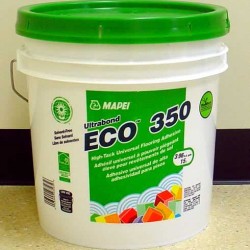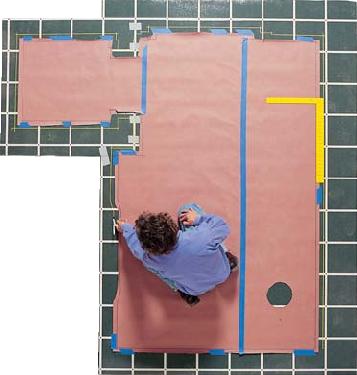Using Vinyl Flooring Adhesive with Sheet Vinyl
Though not as wildly popular as they once were, vinyl floors do remain a viable option for homeowners. Some rooms, like a laundry room, are seemingly made for it. It’s easy to clean up and given its array of patterns, you can quickly spruce up a room from the floor up using such a system.
If you decide to install vinyl flooring, you’ll need a few supplies:
- Vinyl roll sheets
- A paper template
- Utility knife
- Vinyl floor adhesive
These are your basic supplies. Of course, you’ll also need supplies to prepare your subfloor, which should be level, devoid of any highs or lows. Once the vinyl sheet is laid over the pre-existing floor, you do not want any pockets of air. It should be flush against the subfloor, smoothed out so that the surface is completely flat.

Creating Your Vinyl Floor Template
When laying down vinyl sheeting, it’s advisable you create a paper template first. This can easily be made from shipping paper or with newspaper taped together.
Creating a paper template enables you to measure out any angles or tricky spots, as well as the total amount of vinyl sheet needed. Mistakes can be quite costly, as you’ll essentially have to start from square one.
Once the template has been pieced together, simply use a utility knife to precisely cut the vinyl sheeting. The vinyl cutout can then be put into place, ready for the vinyl floor adhesive.
Entire Floor vs. Perimeter
When installing a vinyl floor, the biggest decision you’ll have to make is whether to apply adhesive to the entire floor or to only the perimeter.
These days, applying a bed of adhesive to a vinyl floor is less common. However, there are instances when you might consider it:
- If the material you’re using is of lesser quality.
- If you are certain you won’t pull the floor up in the future. Again, this could be the case for a laundry room or other permanent small space.
More common is applying vinyl floor adhesive to only the perimeter of the sheeting. Even though this is typically reserved for higher-quality vinyl, it also protects you in the future, should you choose to make a change. By applying the adhesive only to the perimeter, removal, replacement, and repair become much simpler.
Installing Vinyl Flooring on Concrete Floors
Vinyl can be installed over a variety of surfaces, but moisture is always a concern. Concrete floors are the most susceptible to moisture collection, given their high alkalinity (pH). Vinyl floor adhesive won’t work as well if any moisture is trapped beneath the vinyl sheet. If moisture exists, it will ultimately lead to curling, discoloration, and adhesive failure.
Certain measures should be taken if you wish to install vinyl over concrete. Namely, you should test the surface for alkalinity. How much is there? If it’s too high, you may want to reconsider your flooring choice. Laminate flooring for instance, may be a better alternative. The chance of your vinyl floor adhesive failing, may be too costly a risk in the overall big picture.
